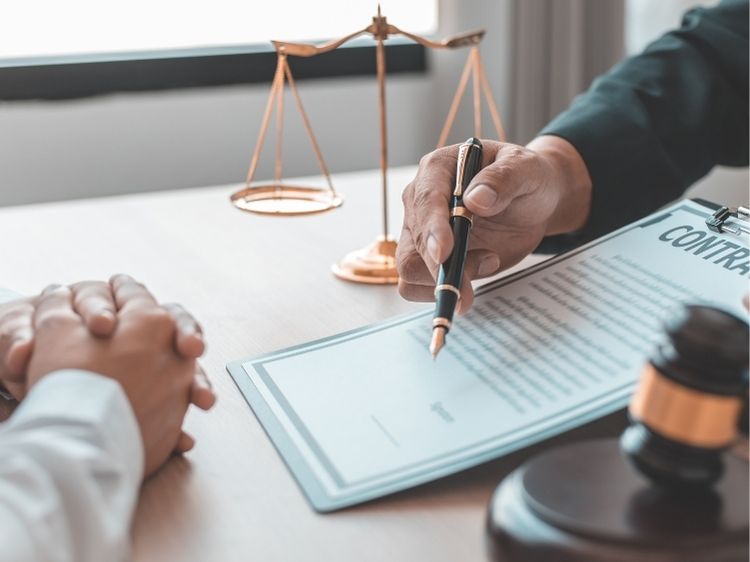Strict Liability vs Negligence: Understanding the Key Differences
When it comes to legal disputes, especially in personal injury cases, two concepts frequently come into play: strict liability and negligence. These terms often confuse people, but understanding the difference between them is crucial, particularly if you’re ever involved in a legal situation. Whether you’re dealing with a car accident, a product defect, or a slip-and-fall case, knowing whether the case involves strict liability or negligence can significantly impact the outcome.
In this article, we’ll break down these legal concepts, explore their implications, and help you understand when each applies. By the end of this read, you’ll have a clear grasp of strict liability vs negligence, enabling you to navigate legal waters with more confidence.
What is Strict Liability?
Strict liability is a legal doctrine that holds a party responsible for their actions or products, regardless of fault or intent. In simpler terms, if something goes wrong, and you’re deemed liable, it doesn’t matter if you took every precaution possible—you’re still on the hook.
This concept is commonly applied in cases involving inherently dangerous activities, defective products, or certain types of animal attacks. For instance, if a company manufactures a product that injures someone, the company could be held strictly liable, even if they weren’t negligent in the manufacturing process. The focus here is on the activity or product’s nature, not the care exercised by the defendant.
Examples of Strict Liability
- Product Liability: If a child chokes on a small part of a toy, the manufacturer could be held strictly liable, even if they followed all safety guidelines.
- Abnormally Dangerous Activities: If a company uses explosives to demolish a building and debris damages nearby properties, the company may be strictly liable, regardless of how careful they were.
- Animal Attacks: In many jurisdictions, pet owners are strictly liable if their dog bites someone, regardless of the dog’s history or the owner’s precautions.
What is Negligence?
Negligence, on the other hand, is a failure to exercise the care that a reasonably prudent person would exercise in similar circumstances. It’s not enough for something to go wrong; there must be a failure to act with the care that the situation demands.
Negligence requires proving that the defendant had a duty to the plaintiff, breached that duty, and caused harm as a result. Unlike strict liability, negligence focuses on the defendant’s behavior and whether it fell below a standard of care.
Elements of Negligence
To successfully claim negligence, the plaintiff must establish the following elements:
- Duty of Care: The defendant had a legal obligation to act with care towards the plaintiff.
- Breach of Duty: The defendant failed to meet this duty through their actions or inactions.
- Causation: The breach of duty caused the plaintiff’s injury or loss.
- Damages: The plaintiff suffered actual harm or damage as a result.
Examples of Negligence
- Car Accidents: If a driver runs a red light and crashes into another vehicle, they could be found negligent for not following traffic laws.
- Medical Malpractice: A doctor who fails to diagnose a treatable condition may be deemed negligent for not providing the standard of care.
- Slip and Fall: If a store fails to clean up a spill and a customer slips and falls, the store could be found negligent.
Comparing Strict Liability vs Negligence
While both strict liability and negligence deal with harm caused to individuals, the key difference lies in the burden of proof and the focus of the case.
- Burden of Proof: In negligence cases, the plaintiff must prove that the defendant was at fault by showing they breached a duty of care. In strict liability cases, the plaintiff only needs to show that the harm occurred and that the defendant’s activity or product was responsible, regardless of fault.
- Focus: Negligence cases focus on the defendant’s conduct and whether it was reasonable. Strict liability cases focus on the nature of the defendant’s activity or product, not their behavior.
When Does Strict Liability Apply?
Strict liability typically applies in situations where the activities or products involved are inherently dangerous or where the law imposes a higher standard of care. This includes cases involving:
- Dangerous Animals: Owners of wild animals or certain breeds of dogs might face strict liability if the animal injures someone.
- Defective Products: Manufacturers can be held strictly liable for injuries caused by defective products, regardless of the care they took during production.
- Hazardous Activities: Companies engaged in activities like blasting, mining, or chemical manufacturing may be subject to strict liability for any harm caused.
When Does Negligence Apply?
Negligence applies in a broader range of situations, from everyday accidents to professional malpractice. It’s the standard for most personal injury cases, where the focus is on whether the defendant acted with reasonable care.
- Everyday Accidents: Slip and falls, car accidents, and pedestrian injuries often involve negligence claims.
- Professional Malpractice: Doctors, lawyers, and other professionals can be sued for negligence if they fail to perform their duties to the required standard.
- Premises Liability: Property owners have a duty to keep their premises safe. If they fail to do so, they may be found negligent.
The Legal Process: Proving Your Case
Understanding whether a case involves strict liability vs negligence is just the first step. The legal process involves gathering evidence, building a case, and proving your claims in court.
Proving Strict Liability
In a strict liability case, the plaintiff must show:
- The defendant’s activity or product caused the harm.
- The harm was directly linked to the defendant’s activity or product.
Because fault or intent isn’t required, these cases often hinge on expert testimony and evidence that demonstrates the connection between the defendant’s actions and the plaintiff’s injury.
Proving Negligence
To prove negligence, the plaintiff needs to establish all four elements mentioned earlier: duty, breach, causation, and damages. This often requires:
- Gathering evidence: This could include photos, video footage, witness statements, or expert testimony.
- Demonstrating the standard of care: The plaintiff must show what a reasonable person would have done in similar circumstances and how the defendant failed to meet this standard.
- Proving causation: The plaintiff must link the defendant’s breach of duty to the harm they suffered.
FAQs
What’s the difference between strict liability and negligence?
Strict liability holds a party responsible for harm regardless of fault, while negligence requires proof that the defendant’s conduct was unreasonable and caused harm.
When is strict liability typically applied?
Strict liability is often applied in cases involving inherently dangerous activities, defective products, or certain types of animal attacks.
Can a negligence case also involve strict liability?
Yes, some cases might involve both negligence and strict liability claims, especially if multiple parties or actions are involved.
How do I know if I have a negligence or strict liability case?
It’s essential to consult with a legal professional who can assess the specifics of your case and determine the best legal strategy.
Do I need to prove fault in a strict liability case?
No, in strict liability cases, the plaintiff doesn’t need to prove fault—only that the defendant’s activity or product caused harm.
Conclusion
Understanding the differences between strict liability vs negligence can be crucial in determining the outcome of a legal case. While strict liability focuses on the nature of the activity or product, negligence centers on the defendant’s conduct. Knowing when each applies can help you build a stronger case and seek the compensation you deserve.
Remember, legal matters are complex, and navigating them often requires professional guidance. If you’re involved in a case that might involve strict liability or negligence, it’s wise to consult with an attorney who can help you understand your rights and options.







